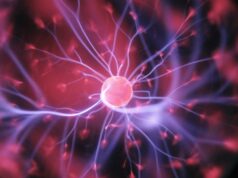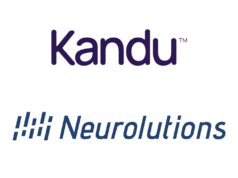 Spinal cord stimulation (SCS) therapy has been shown to trigger instant improvements in arm and hand mobility, enabling people affected by moderate-to-severe stroke to perform daily activities more easily, as reported in Nature Medicine by researchers from the University of Pittsburgh and Carnegie Mellon University in Pittsburgh, USA.
Spinal cord stimulation (SCS) therapy has been shown to trigger instant improvements in arm and hand mobility, enabling people affected by moderate-to-severe stroke to perform daily activities more easily, as reported in Nature Medicine by researchers from the University of Pittsburgh and Carnegie Mellon University in Pittsburgh, USA.
“We discovered that electrical stimulation of specific spinal cord regions enables patients to move their arm in ways that they are not able to do without the stimulation,” said corresponding and co-senior author Marco Capogrosso (University of Pittsburgh, Pittsburgh, USA). “Perhaps even more interesting; we found that, after a few weeks of use, some of these improvements endure when the stimulation is switched off, indicating exciting avenues for the future of stroke therapies. Thanks to years of preclinical research building up to this point, we have developed a practical, easy-to-use stimulation protocol adapting existing FDA [Food and Drug Administration]-approved clinical technologies that could be easily translated to the hospital and quickly moved from the lab to the clinic.”
According to the researchers, this new technology has the potential to offer hope for stroke survivors living with impairments that would otherwise be considered permanent.
“Creating effective neurorehabilitation solutions for people affected by movement impairment after stroke is becoming ever more urgent,” said co-senior author Elvira Pirondini (University of Pittsburgh, Pittsburgh, USA). “Even mild deficits resulting from a stroke can isolate people from social and professional lives, and become very debilitating, with motor impairments in the arm and hand being especially taxing and impeding simple daily activities, such as writing, eating and getting dressed.”
While SCS therapies have been used widely to treat high-grade, persistent pain, and multiple research groups have shown it can be deployed in restoring leg movement after a spinal cord injury, the researchers state that the “unique dexterity of the human hand”—combined with the wide range of motion of the arm at the shoulder, and the complexity of the neural signals controlling the arm and hand—create a significantly greater set of challenges.
However, following years of extensive preclinical studies involving computer modelling, and animal testing in macaque monkeys with partial arm paralysis, the researchers were cleared to test this optimised therapy in humans.
“The sensory nerves from the arm and hand send signals to motor neurons in the spinal cord that control the muscles of the limb,” said co-senior author Douglas Weber (Carnegie Mellon University, Pittsburgh, USA). “By stimulating these sensory nerves, we can amplify the activity of muscles that have been weakened by stroke. Importantly, the patient retains full control of their movements; the stimulation is assistive and strengthens muscle activation only when patients are trying to move.”
In a series of tests adapted to individual patients, stimulation enabled participants to perform tasks of different complexity, from moving a hollow metal cylinder to grasping common household objects, such as a can of soup, and opening a lock. Clinical assessments showed that stimulation targeting cervical nerve roots immediately improves strength, range of movement, and function of the arm and hand, the researchers have reported.
Unexpectedly, the effects of stimulation seem to be longer-lasting than scientists originally thought and persisted even after the device was removed, suggesting it could be used both as an assistive and a restorative method for upper limb recovery. The researchers believe the immediate effects of the stimulation enable administration of intense physical training that, in turn, could lead to even stronger long-term improvements in the absence of the stimulation.
Moving forward, they will continue to enrol additional trial participants to understand which stroke patients can benefit most from this therapy—and how to optimise stimulation protocols for different severity levels. Additionally, the two universities involved are working with startup firm Reach Neuro to translate this therapy into clinical use.










